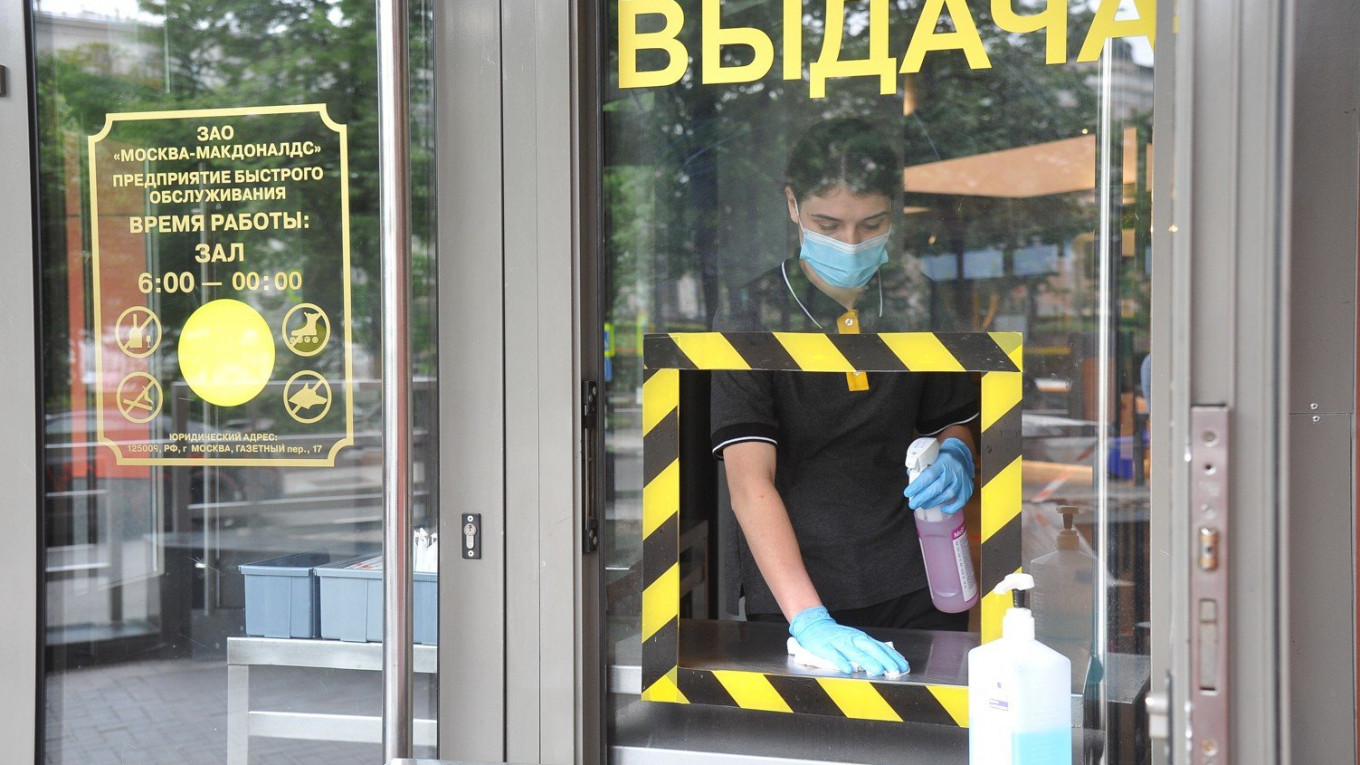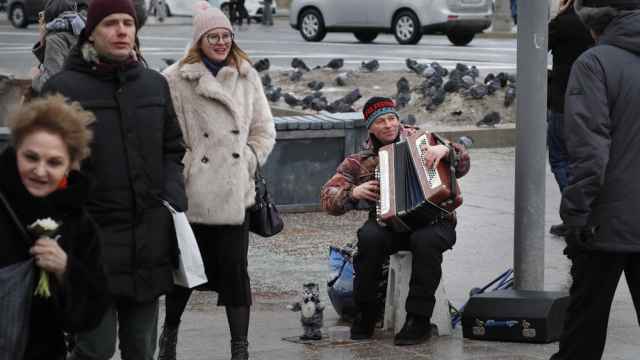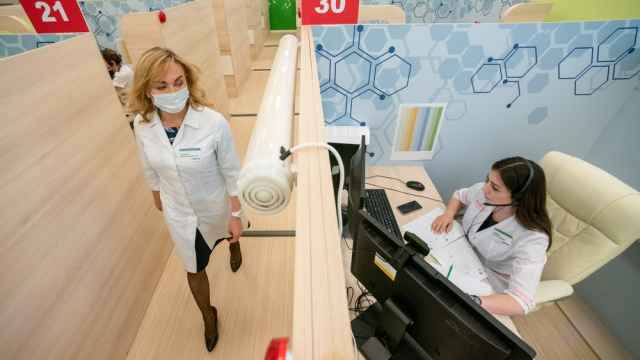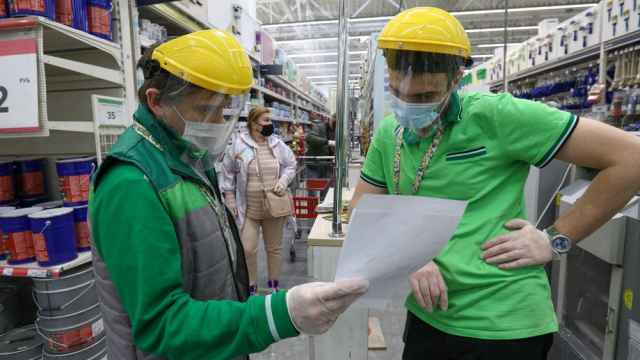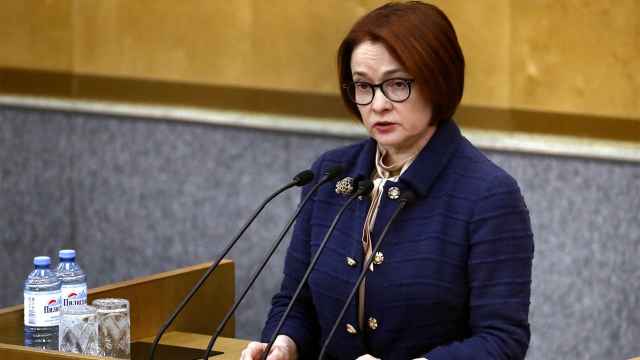A year ago today Russia went into its first — and only — coronavirus lockdown.
It was first officially declared a “nationwide non-working week,” designed to keep as many people at home as possible and keep Russia’s infection rate low, President Vladimir Putin outlined in an address to the nation days before swathes of the country were shut down.
One week became six and, in mid-May the nationwide lockdown was wound down, with Russia starting to reopen on a region-by-region basis.
As other countries have been plunged into second, third or fourth shutdowns in the months that followed, Russia has held firm — keeping its economy open even as a punishing second wave of the virus pushed regional healthcare systems to the brink.
That Russia’s sole coronavirus lockdown lasted under two months is seen by economists as one of the main reasons the country avoided the eye-watering double-digit falls in GDP or rapid surges in unemployment that many developed nations experienced. But it also explains why Russia has one of the world’s highest excess death tolls from the pandemic, according to health experts.
“For the first time in history, Russia went through a crisis better than the world as a whole,” economists at Russia’s Higher School of Economics (HSE) wrote.
Russia’s economy shrank by 3.1% last year — compared to a global average of 3.5% — and a number of indicators are now back close to their pre-pandemic levels. The Russian economy has added more than a million jobs in the last three months, taking the official unemployment level to just 5.7% — compared with 4.8% before the pandemic and a high of 6.4% last August.
Retail sales, which crashed by more than a fifth during the six-week shutdown, hit pre-coronavirus levels in January, as economists say Russian shoppers will be key to the ongoing recovery.
The overall economy could regain its 2019 size by the end of this year according to forecasts produced by the Economy Ministry. Even the most pessimistic independent forecasters calculate the economy hitting pre-pandemic levels by early next year — a far cry from predictions made last year that Russia’s economic recovery would take until 2024.
“The pace of economic recovery is higher than expected,” Russia’s Central Bank stated in its latest assessment of the country’s economic health. “Increasingly more businesses report that their production rate has returned to the pre-pandemic level,” it added.
For those who analyzed the country’s economic prospects when Russia entered lockdown, the performance seems hard to comprehend.
Analysts — including private modelling conducted for the Kremlin — were predicting that Russia’s GDP would fall by more than 10% for the year and that unemployment could hit 15%.
Amid the forced closure of shops and despite rapid growth in the country’s e-commerce space, sales of non-food items fell by 35% during the lockdown in April 2020.
With only a modest increase in unemployment benefits and emergency support packages which ignored substantial parts of the Russian business community and households, there were fears the economic blow could be the most severe since Putin first came to power at the end of the chaotic 1990s. In a survey conducted by HSE, only four in ten respondents said their family had received extra government support throughout the pandemic.
Oil prices — still one of the most important single factors influencing the strength of the Russian economy — fell by two-thirds in a matter of weeks, sinking to almost $20 a barrel.
Lingering costs
Despite beating expectations, the economic blows from the lockdown and the pandemic are still weighing on the economy. The fall in oil prices and cut in production agreed with Russia’s OPEC partners contributed to a 7% fall in government revenue — at the same time expenses jumped 25%, pushing Russia to a 4.1 trillion ruble ($54 billion) deficit. That pushed Russia’s government debt up 40% — though the state’s debt burden is still one of the world’s most comfortable.
Longer-term pain could also be on the cards due to the way Russia has fought the economic costs of the virus, says Dmitry Dolgin, Russia economist at ING bank.
“The defensive performance of the Russian economy during the pandemic does not, however, guarantee a robust recovery afterwards. With fixed investments and household income at multi-year lows, and limited room for further stimulus, a GDP recovery beyond the base effect would be a challenge,” he said in a recent research note.
The “base effect” refers to the first period used in calculations of economic performance over a certain timeframe. Now one year on from lockdown, it means the Russian economy is about to post statistics showing its best ever 12-month performance, because data covering retail sales, wages, economic output and other indicators will be compared against where they were 12 months ago — during the lockdown slump.
Regional variations also persist across Russia’s unequal economy, VTB Capital noted in a recent report.
“Behind the relatively benign headline numbers there is a stark polarization of outcomes and experiences across the Russian regions,” it said, pointing to a “vulnerable and uneven” recovery.
For instance, industrial production was up 15.5% in Moscow and its suburbs last year, but down 3.6% in oil-producing Siberia. Construction jumped 5.7% in Moscow, where a building boom provided a significant boost to the economy coming out of lockdown. But it crashed 25% in the North West Federal District, which stretches from St. Petersburg to Russia’s arctic north.
There are also concerns over how sharply the pandemic accelerated Russians’ reliance on the government for their economic well being. Around 36% of household income now comes directly from the state, ING’s Dolgin calculated — a three percentage point jump over the last 12 months and up from under a quarter in the mid-2000s boom years.
Disposable incomes fell 3.5% in real terms — sharper than in other countries whose overall economies performed worse — leaving Russian households 11% poorer than in 2013.
“The lack of a noticeable improvement in the income trend, its high dependence on the fiscal support, as well as the lacklustre performance on the producer side remain challenges to a robust recovery,” Dolgin said.
A Message from The Moscow Times:
Dear readers,
We are facing unprecedented challenges. Russia's Prosecutor General's Office has designated The Moscow Times as an "undesirable" organization, criminalizing our work and putting our staff at risk of prosecution. This follows our earlier unjust labeling as a "foreign agent."
These actions are direct attempts to silence independent journalism in Russia. The authorities claim our work "discredits the decisions of the Russian leadership." We see things differently: we strive to provide accurate, unbiased reporting on Russia.
We, the journalists of The Moscow Times, refuse to be silenced. But to continue our work, we need your help.
Your support, no matter how small, makes a world of difference. If you can, please support us monthly starting from just $2. It's quick to set up, and every contribution makes a significant impact.
By supporting The Moscow Times, you're defending open, independent journalism in the face of repression. Thank you for standing with us.
Remind me later.



